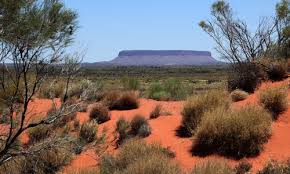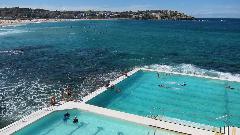This deadly Australia
 Most people in Australia are accustomed to the neighborhood of deadly creatures, perceiving them as familiar everyday life. But actually it’s just amazing how many of the creatures that inhabit the Fifth Continent are poisonous. With snakes, everything is clear, spiders in other parts of the world are poisonous. But fish or shells?
Most people in Australia are accustomed to the neighborhood of deadly creatures, perceiving them as familiar everyday life. But actually it’s just amazing how many of the creatures that inhabit the Fifth Continent are poisonous. With snakes, everything is clear, spiders in other parts of the world are poisonous. But fish or shells?
Let’s start with the spiders, however. No one can answer the question of why in Australia they are so incredibly deadly. After all, the dose of that terrible poison that they use when hunting small insects is a weapon of excess power. Until now, by the way, it remains a mystery and why the cute and pretty platypus needs poisonous spurs on its hind legs.
In fairness, it should be noted that mainly Australian snakes and spiders are peaceful creatures. They are timid, not aggressive, and the person does not interest them at all. As he is not interested in the fauna of the Fifth Continent, where about 2 thousand different plants are toxic.
The oceans of the Green Continent are also famous for the variety of far from harmless inhabitants. In addition to overland reptiles, about 30 species of poisonous sea snakes are found in the coastal waters of Australia. Many of the local brightly colored fish with exotic names found by divers near the coral reefs have poisonous spikes. And in order to look at the needle-like little fish, which in case of danger are inflated like balloons, you do not even need to dive. They are so easily and hilariously caught by fishing tackle. However, this fun can end sadly. Indeed, these fish in thorns contain one of the strongest poisons in the world – tetrodetoxin. A sudden and very painful death may result in acquaintance with some of the Australian jellyfish, for example, a jellyfish box.
It would seem that it could be safer than collecting shells on the seashore. However, you can pay for it with your life. There is nothing more dangerous than picking up a conus conus magus. There is no antidote against her death sting, which can paralyze a person. And again, the same mismatch between the strength of the weapon and the size of the victim is striking. After all, the only prey for this small shell are only tiny fish. No matter how carefully a man tries to pick up this little warrior, he will immediately receive an almost painless but fatal wound.
Alas, not all poisonous creatures live in impassable thickets or in the seas. Some of them prefer the “stone jungle” of large cities. Moreover, if once the habitat of such a unique creature as the leukoputin spider was limited exclusively to the city of Sydney, then today this arthropod killer is found not only in its native metropolis, but also far beyond the state of New South Wales. The spider is very aggressive, always ready to attack, massive fangs can bite through a child’s nail, and if help is not provided on time, the child may fall into a coma and die within two hours after being bitten by male spiders. It took scientists 14 years of hard work to create an antidote.
In general, for scientists, all this unsightly community is a rare chance to study poisons and create medicines and methods for treating various diseases on their basis. From the same conical shells, several tens of thousands of chemical compounds can be distinguished that could form the basis of new drugs. So, based on the toxins of these shells, the Prialt analgesic (Prialt) was created to relieve severe chronic pain. The substance is thousands of times more powerful than morphine, but it does not cause side effects and is successfully used in case patients are intolerant to traditional drugs.
The Australian scientist Stroan Sutherland, known by the name mister Venom – Mr. Yad, entered the history of the world precisely because of his scientific discovery: in 1981, he received an antidote against the bite of one of the most poisonous spiders in the world – the Sydney funnel leukopoint spider, whose poison is extremely toxic.




